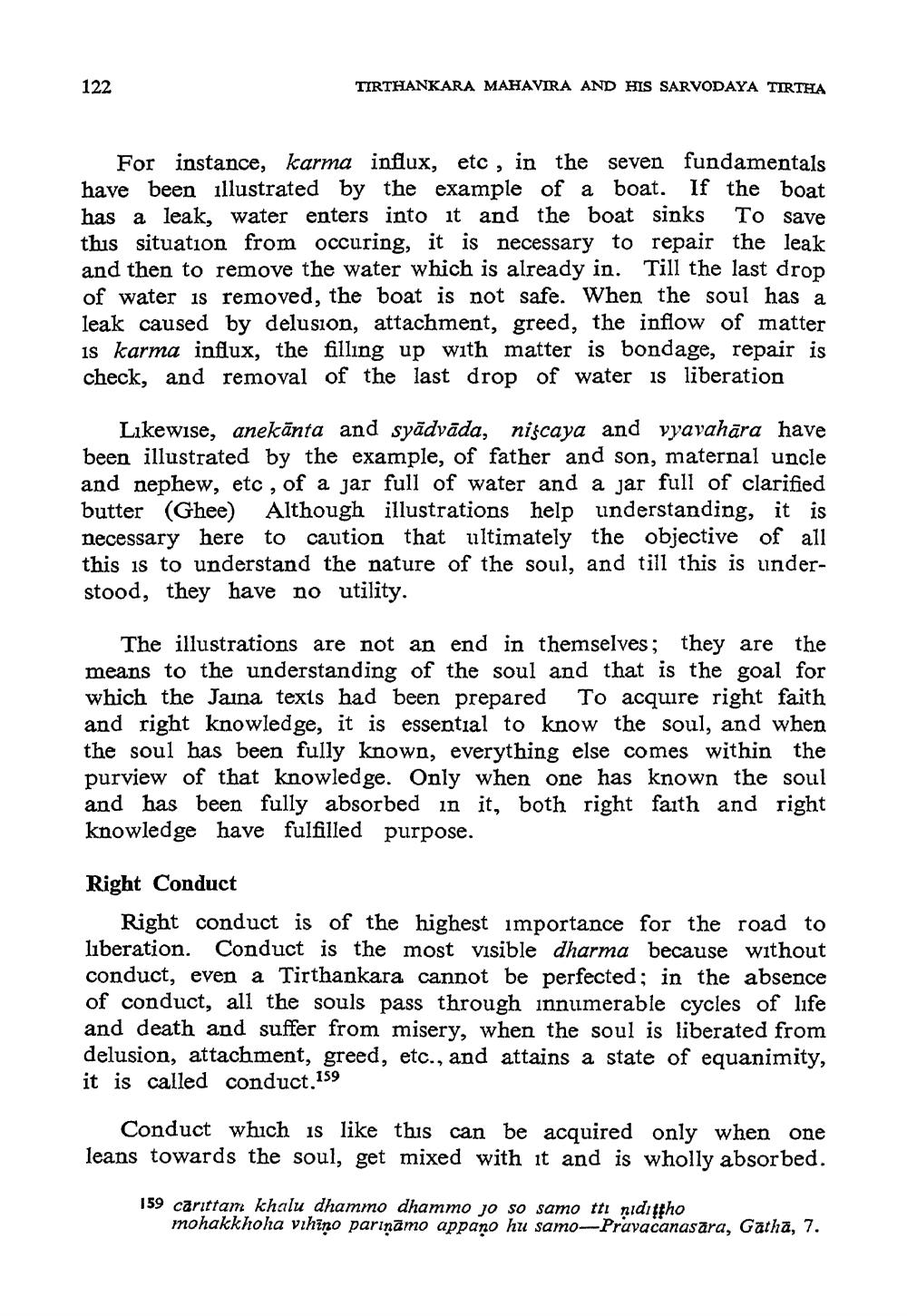________________
122
TIRTHANKARA MAHAVIRA AND HIS SARVODAYA TIRTHA
To save
For instance, karma influx, etc, in the seven fundamentals have been illustrated by the example of a boat. If the boat has a leak, water enters into it and the boat sinks this situation from occuring, it is necessary to repair the leak and then to remove the water which is already in. Till the last drop of water is removed, the boat is not safe. When the soul has a leak caused by delusion, attachment, greed, the inflow of matter Is karma influx, the filling up with matter is bondage, repair is check, and removal of the last drop of water is liberation
Likewise, anekānta and syādvāda, niscaya and vyavahāra have been illustrated by the example, of father and son, maternal uncle and nephew, etc, of a jar full of water and a jar full of clarified butter (Ghee) Although illustrations help understanding, it is necessary here to caution that ultimately the objective of all this is to understand the nature of the soul, and till this is understood, they have no utility.
The illustrations are not an end in themselves; they are the means to the understanding of the soul and that is the goal for which the Jaina texts had been prepared To acquire right faith and right knowledge, it is essential to know the soul, and when the soul has been fully known, everything else comes within the purview of that knowledge. Only when one has known the soul and has been fully absorbed in it, both right faith and right knowledge have fulfilled purpose.
Right Conduct
Right conduct is of the highest importance for the road to liberation. Conduct is the most visible dharma because without conduct, even a Tirthankara cannot be perfected; in the absence of conduct, all the souls pass through innumerable cycles of life and death and suffer from misery, when the soul is liberated from delusion, attachment, greed, etc., and attains a state of equanimity, it is called conduct.159
Conduct which is like this can be acquired only when one leans towards the soul, get mixed with it and is wholly absorbed.
159 carittam khalu dhammo dhammo jo so samo tti nidittho
mohakkhoha vihino parināmo appano hu samo-Pravacanasara, Gatha, 7.




